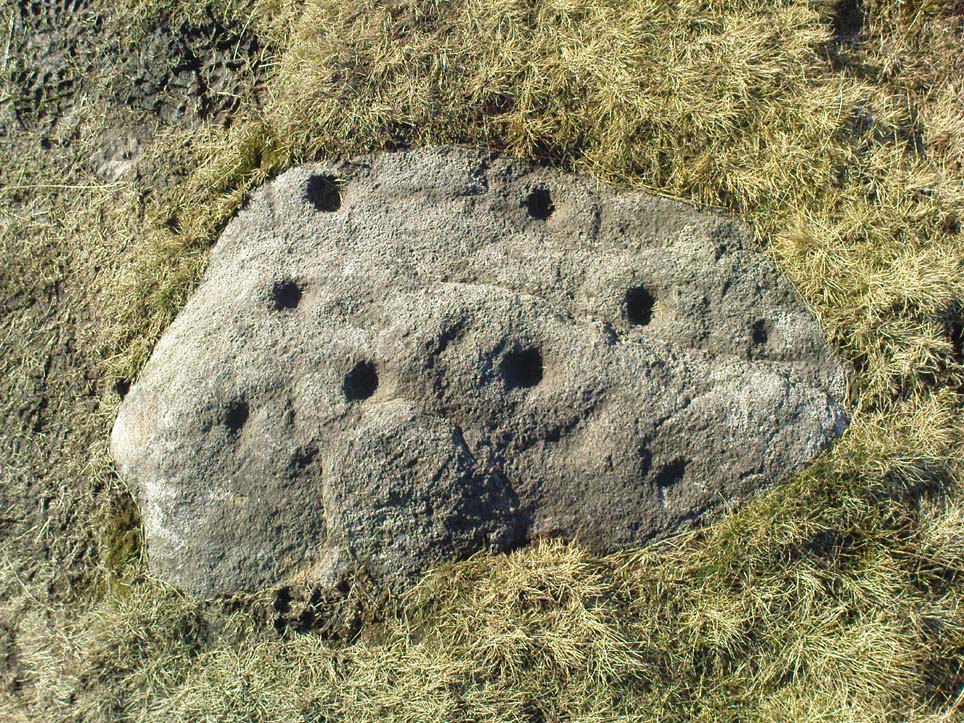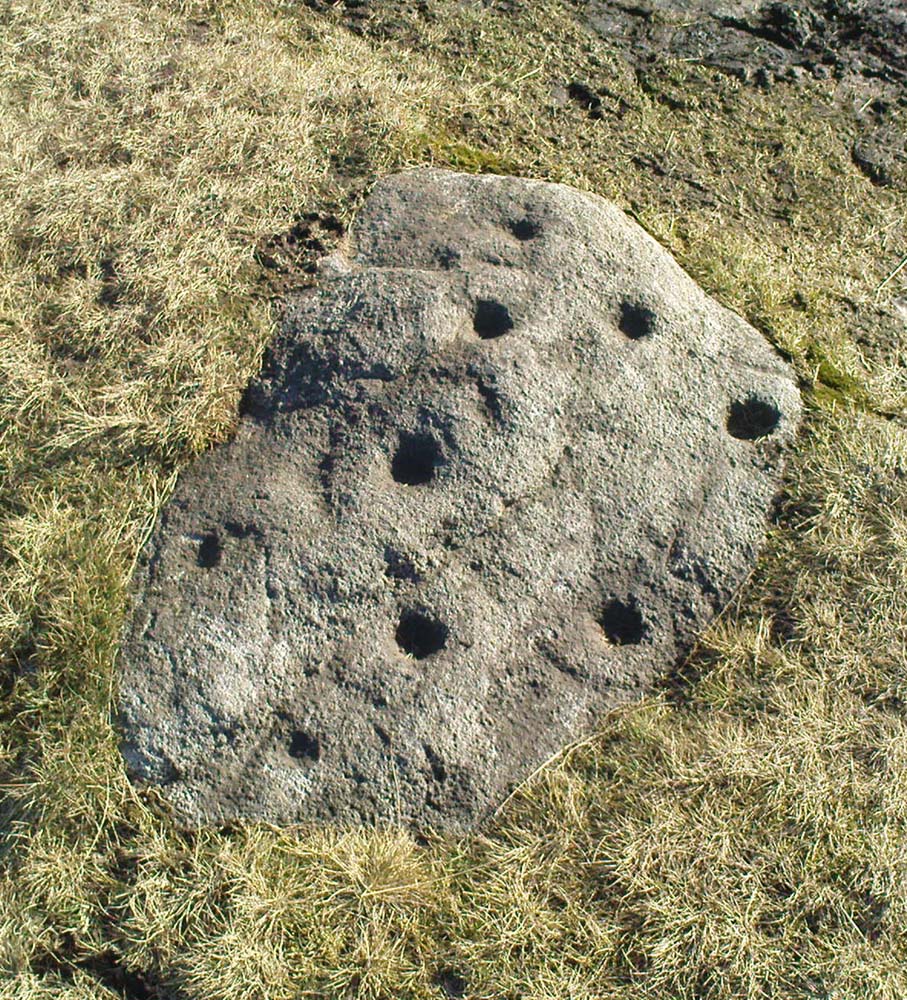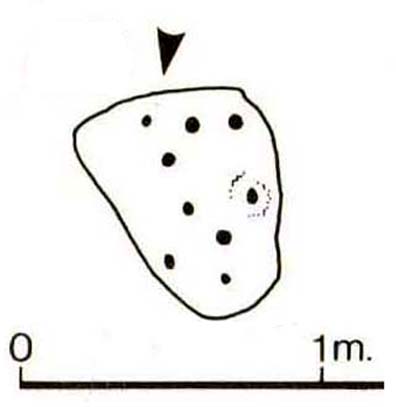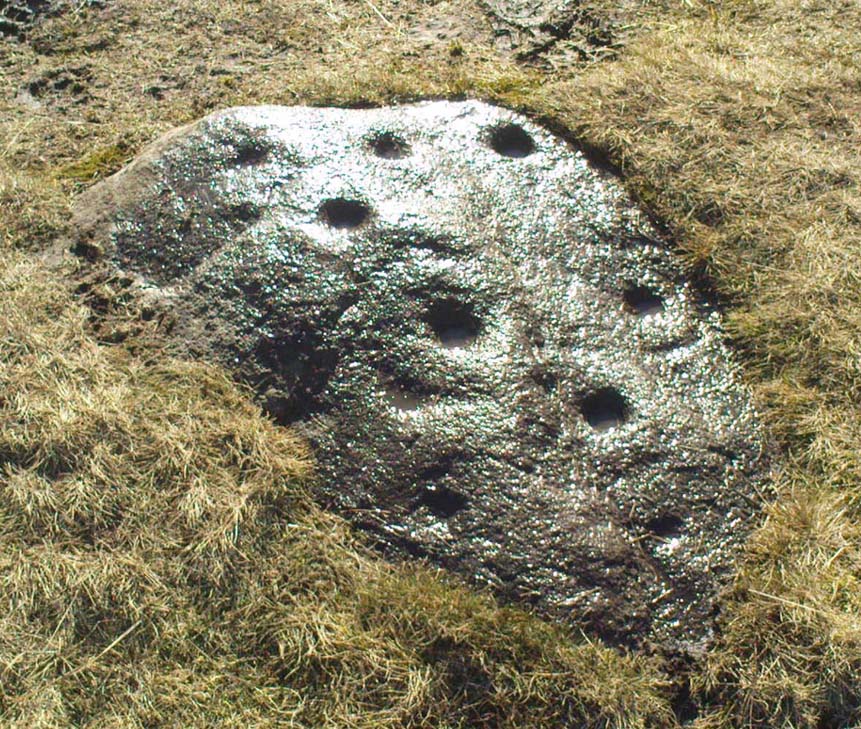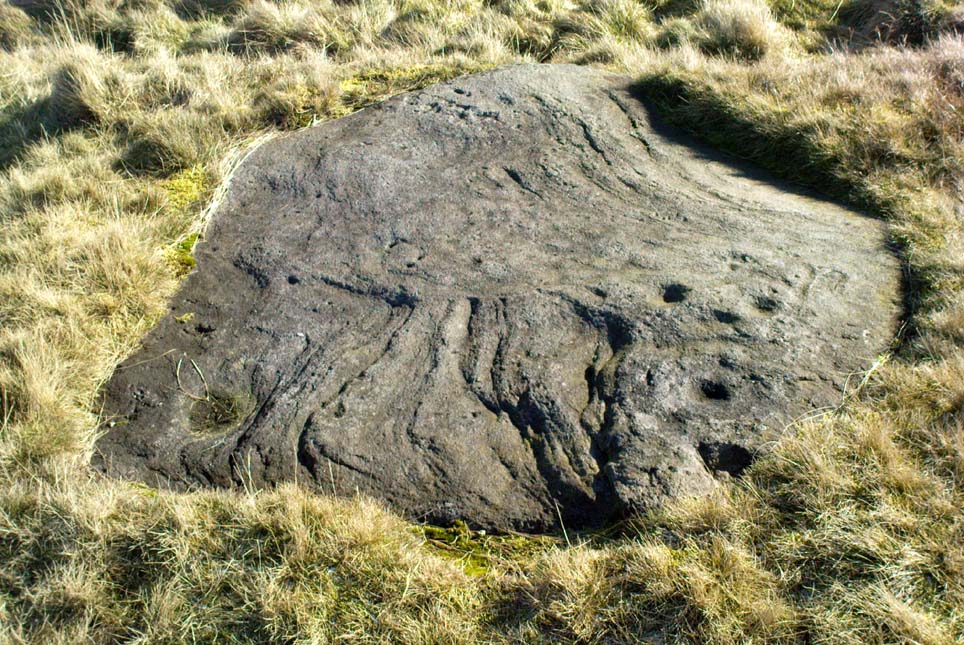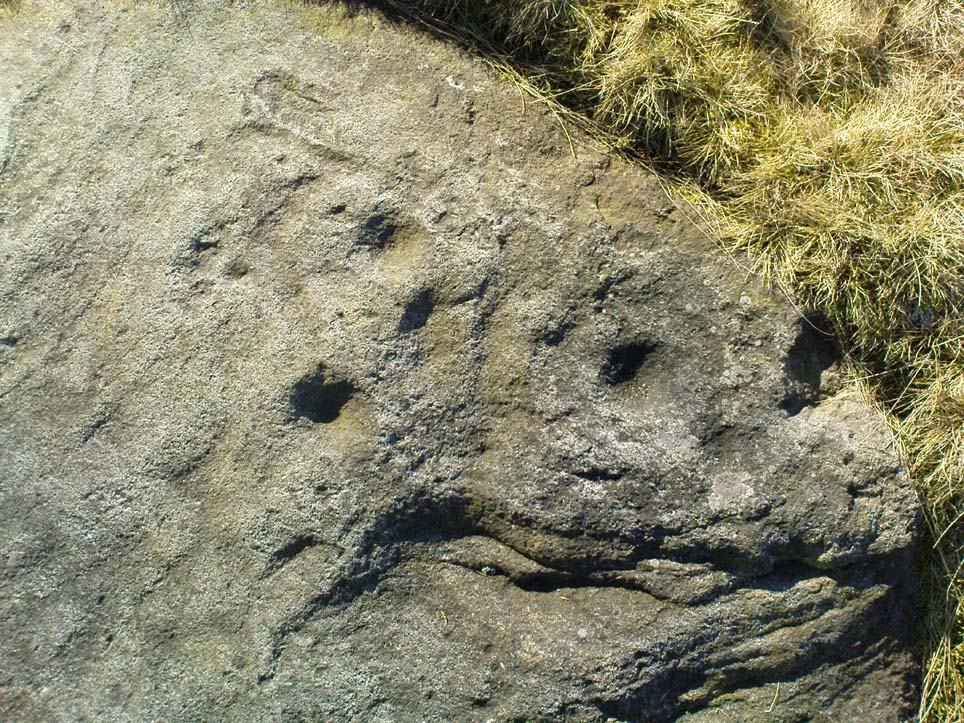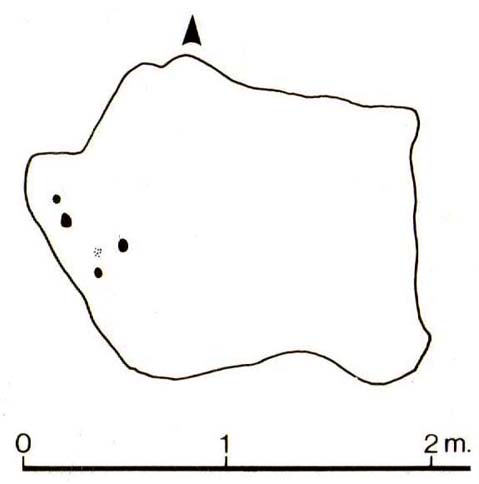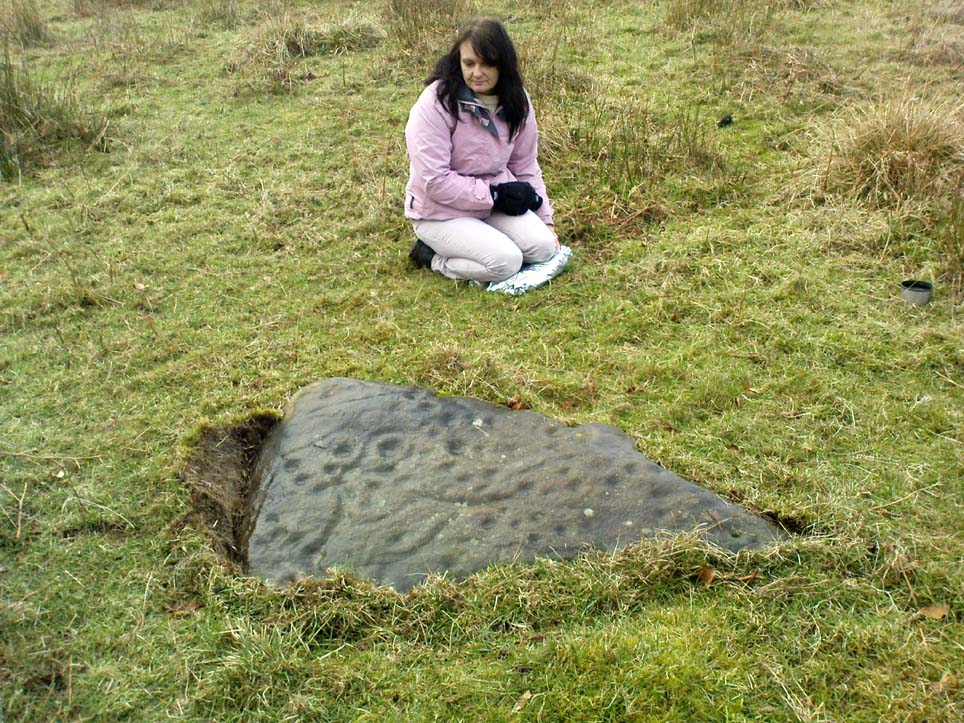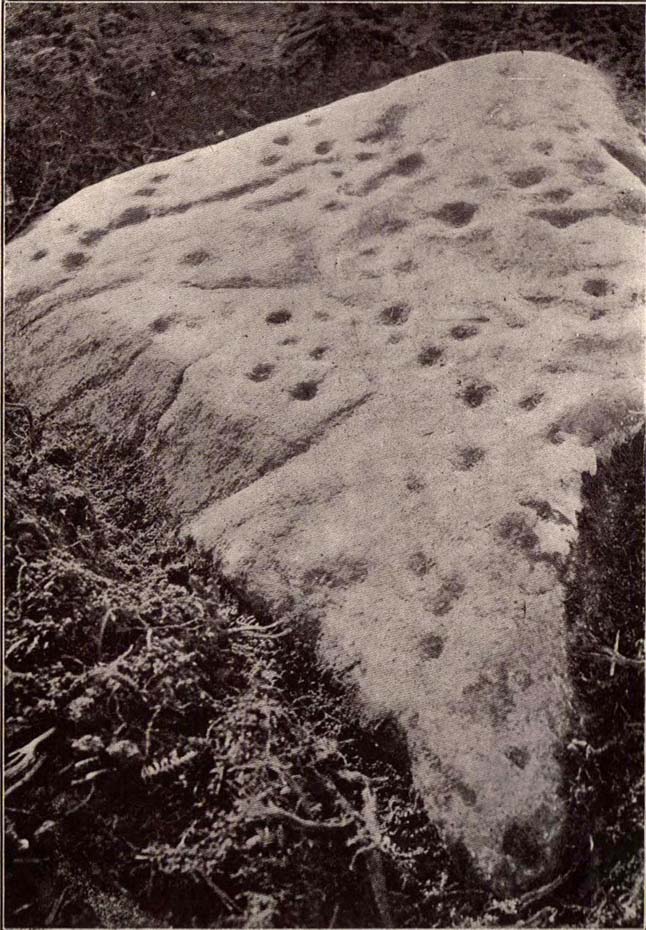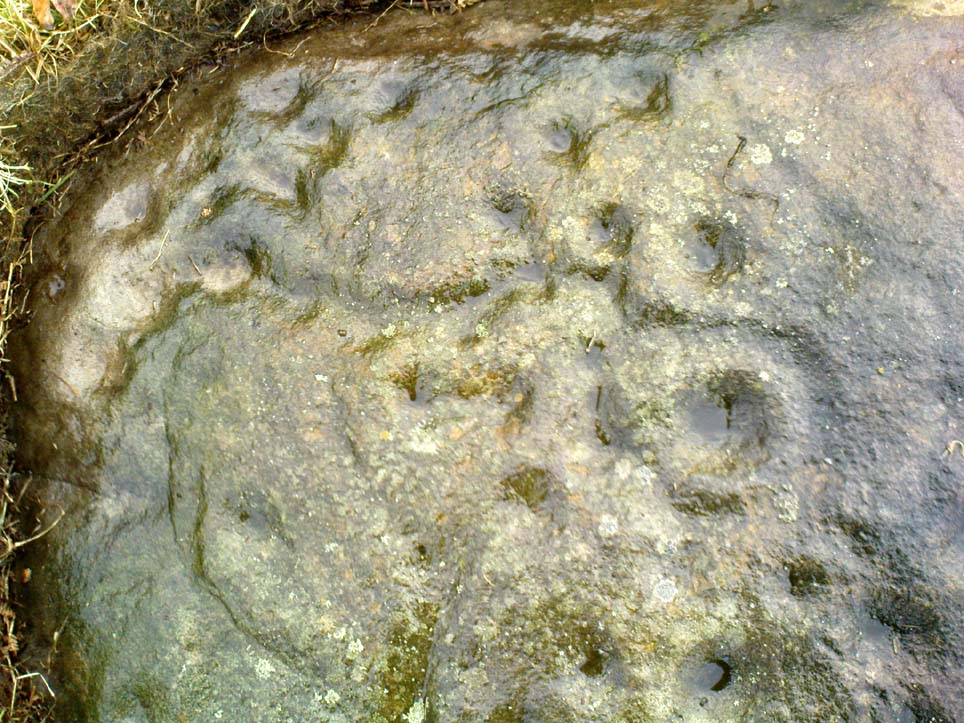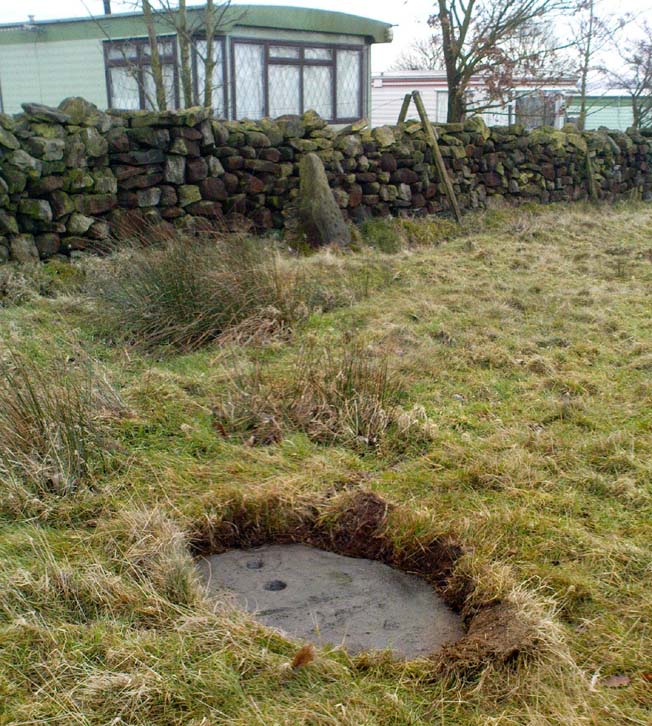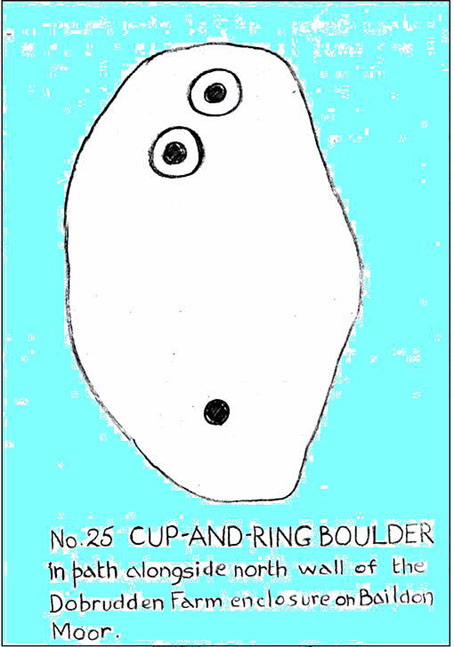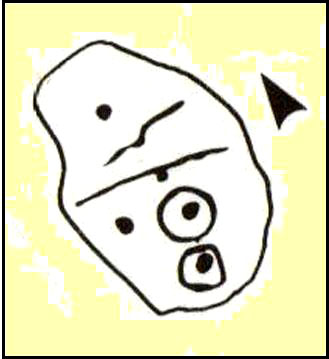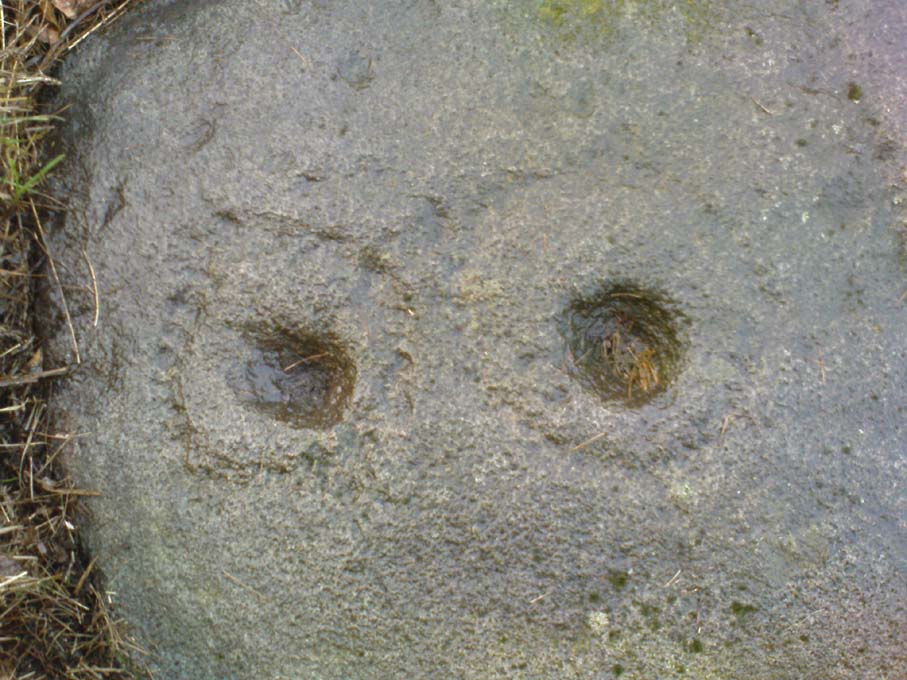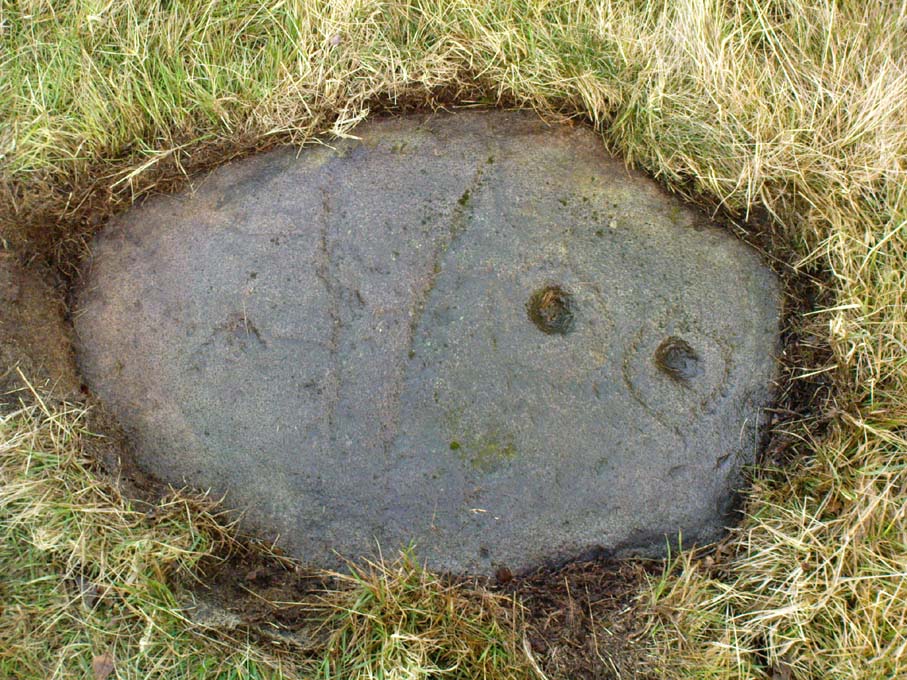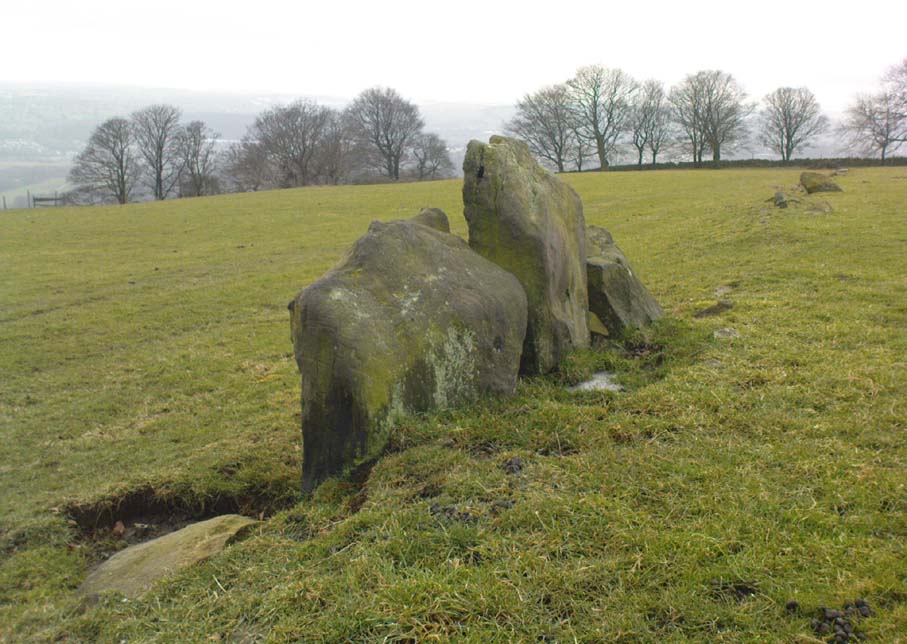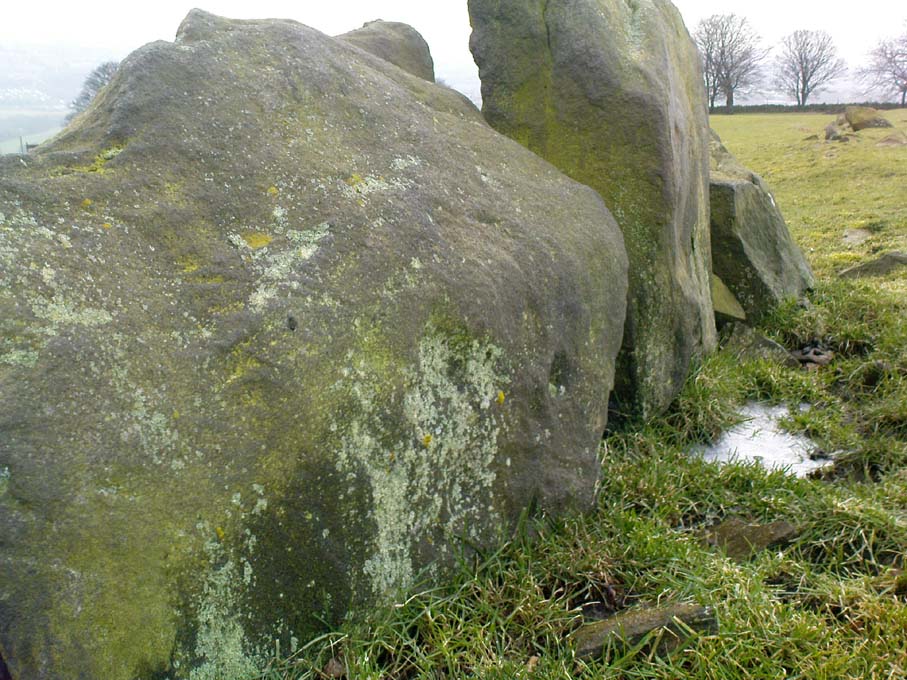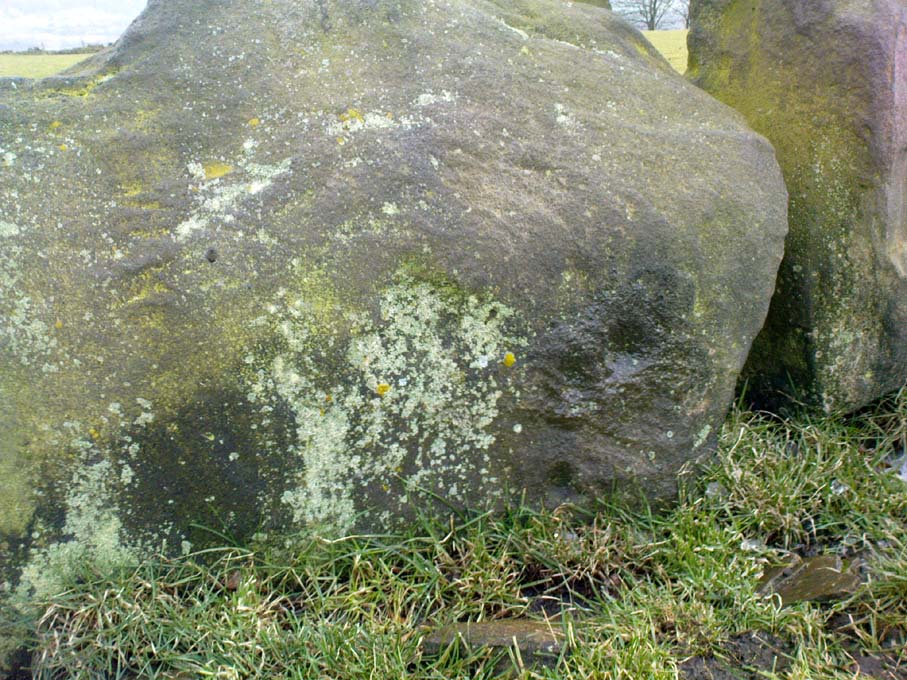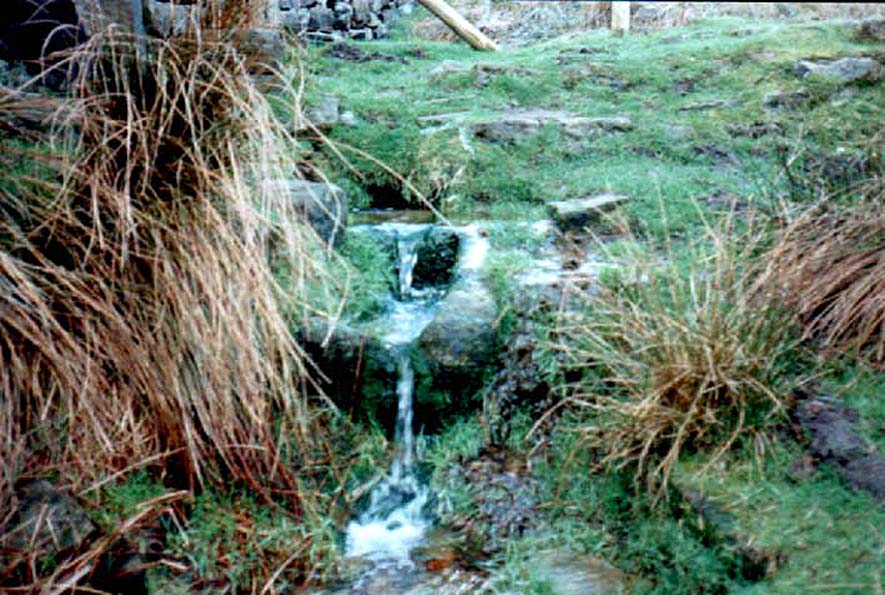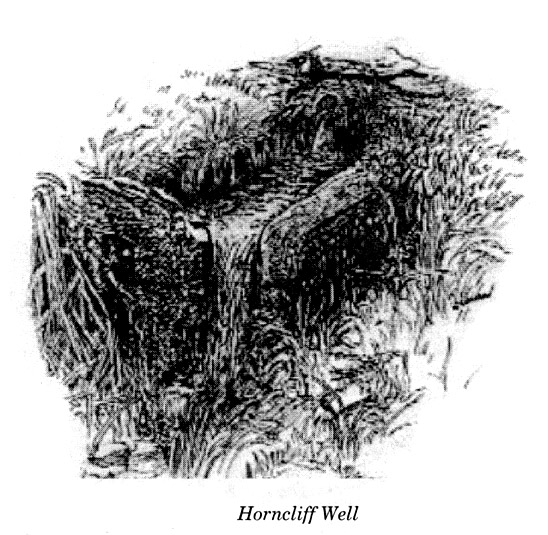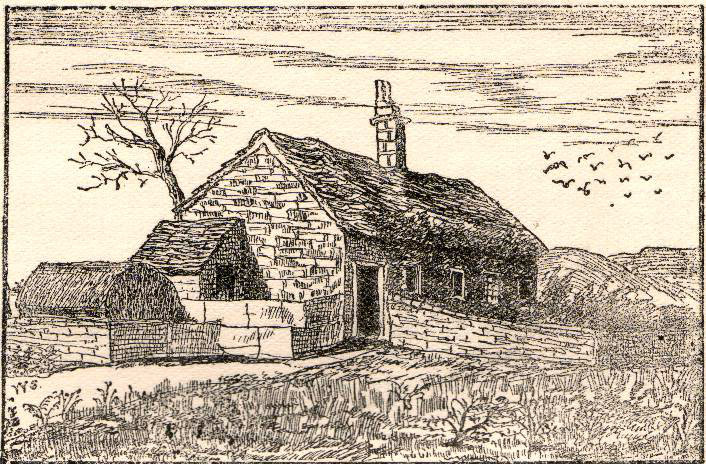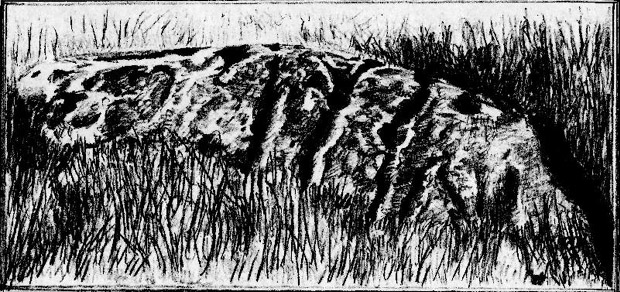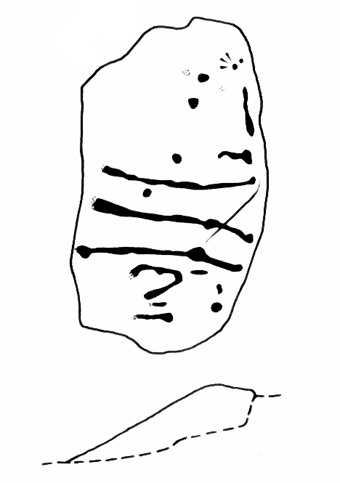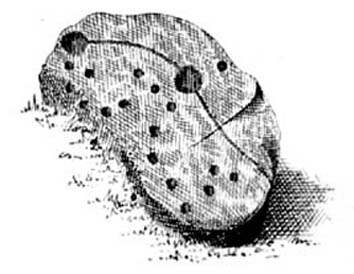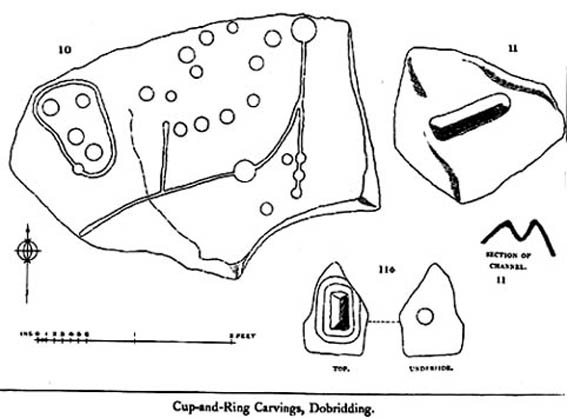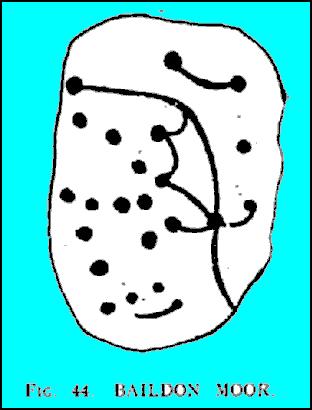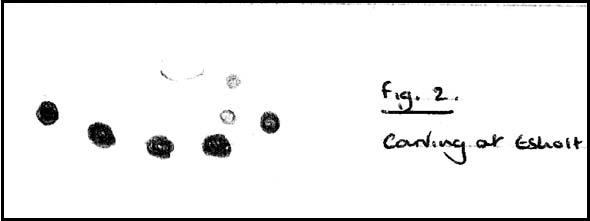Cup-Marked Stone: OS Grid Reference – SE 14690 38699
Also Known as:
- Carving no.193 (Boughey & Vickerman)
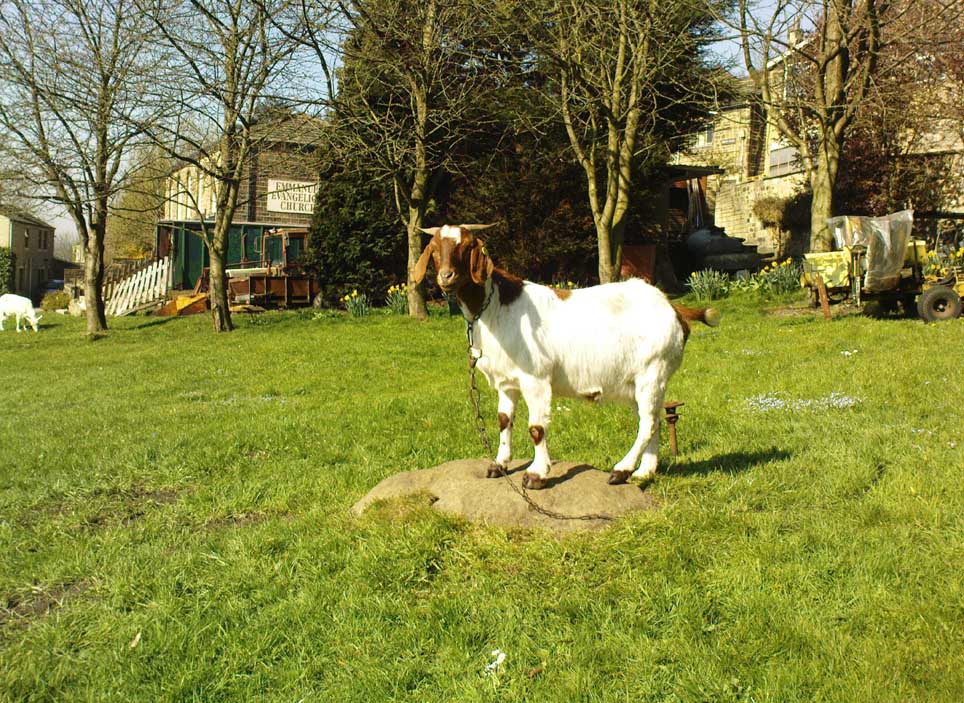
Whether you’re coming here from either Baildon, or Shipley, head for the Cricketer’s Arms pub on Green Road (ask a local). About 50 yards uphill from the pub, on the other side of the road, notice the small pool on the green surrounded by large rocks: it’s the small stone about 15 yards behind the source of the spring. The goats living there usually give the game away!
Archaeology & History
This small stone, found amidst a cluster of others surrounding the medicinal Crutch Well, has its name from the friendly goats who live hereby and, when I came here for the first time in a while the other day, had trouble getting one of the little fellas to shift from his stone! We first found this when we did a lotta venturing around the area when we lived nearby as kids. This particular stone was noted during one of our many exploratory rambles round here, albeit briefly, when I wrote:
“Before going up the slope to Robin Hood’s House we looked at the stones around Crutch Well and found one with some cup-marks on it, on the grass behind the waters.”
I can’t say for sure, but think this carving was later added in the Boughey & Vickerman (2003) survey as stone no.193. They described the stone as:
“Creamish coloured rock about 1m N-S and less than 0.5m high carries two possible shallow cups to centre of surface and a possible third cup (doubtful) to N.”
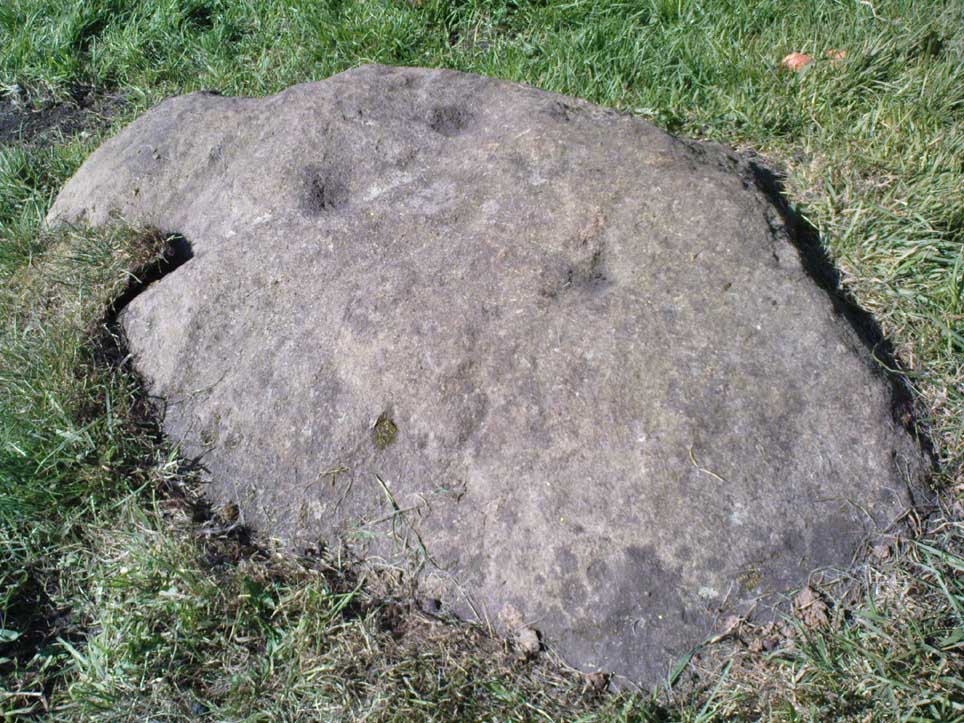
This would seem to be the stone, though there is another faded fourth cup, between the ‘doubtful’ cup and the two distinct ones, with a faded carved line running from it. Their grid-reference isn’t accurate for this and a companion single cup-marked rock (which I’d say was dodgy!), so I’m not 100% sure that we’re dealing with the same carving. There are a lot of small rocks here and in the fields opposite, many with industrial marks on them which, over the years, have faded and give the appearance of cup-markings — which most are not!
References:
- Bennett, Paul, Of Cups and Rings and Things, unpublished: Shipley 1981.
- Boughey, Keith & Vickerman, E.A., Prehistoric Rock Art of the West Riding, WYAS: Wakefield 2003.
© Paul Bennett, The Northern Antiquarian
